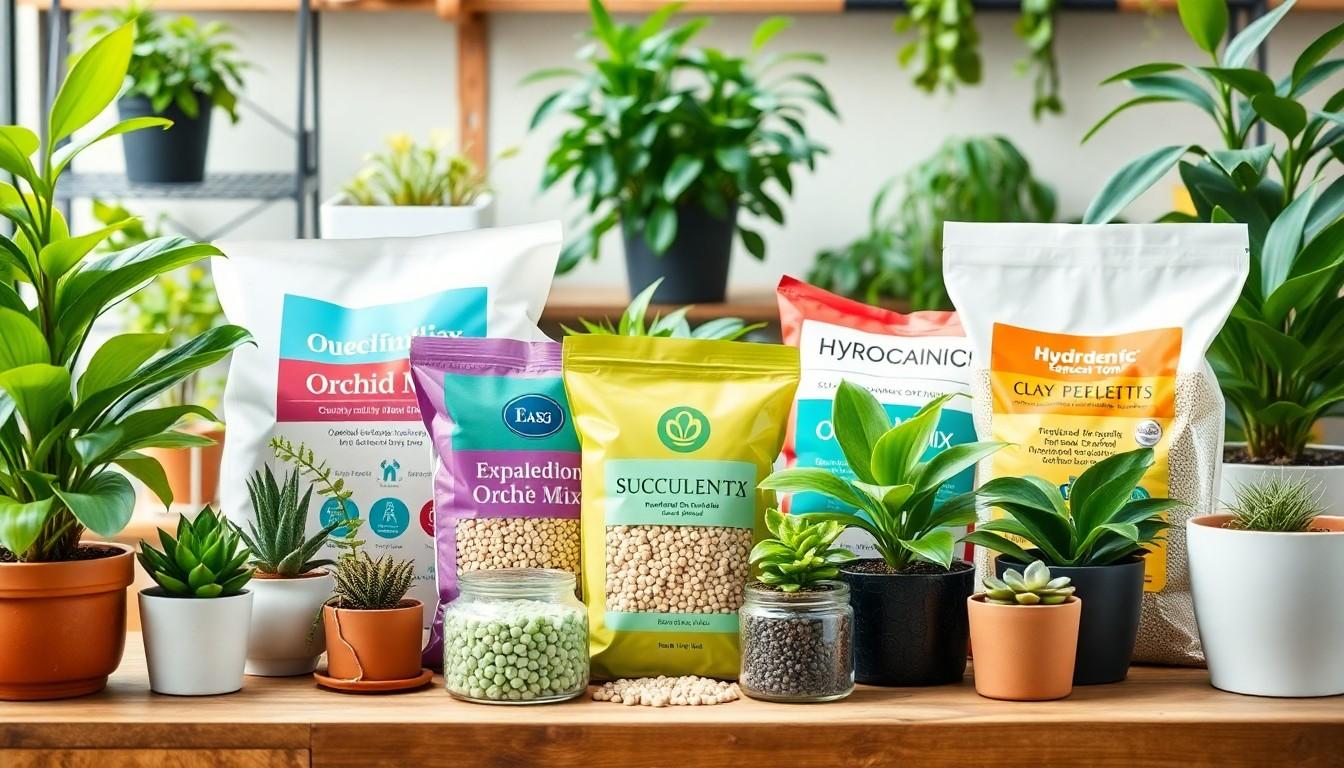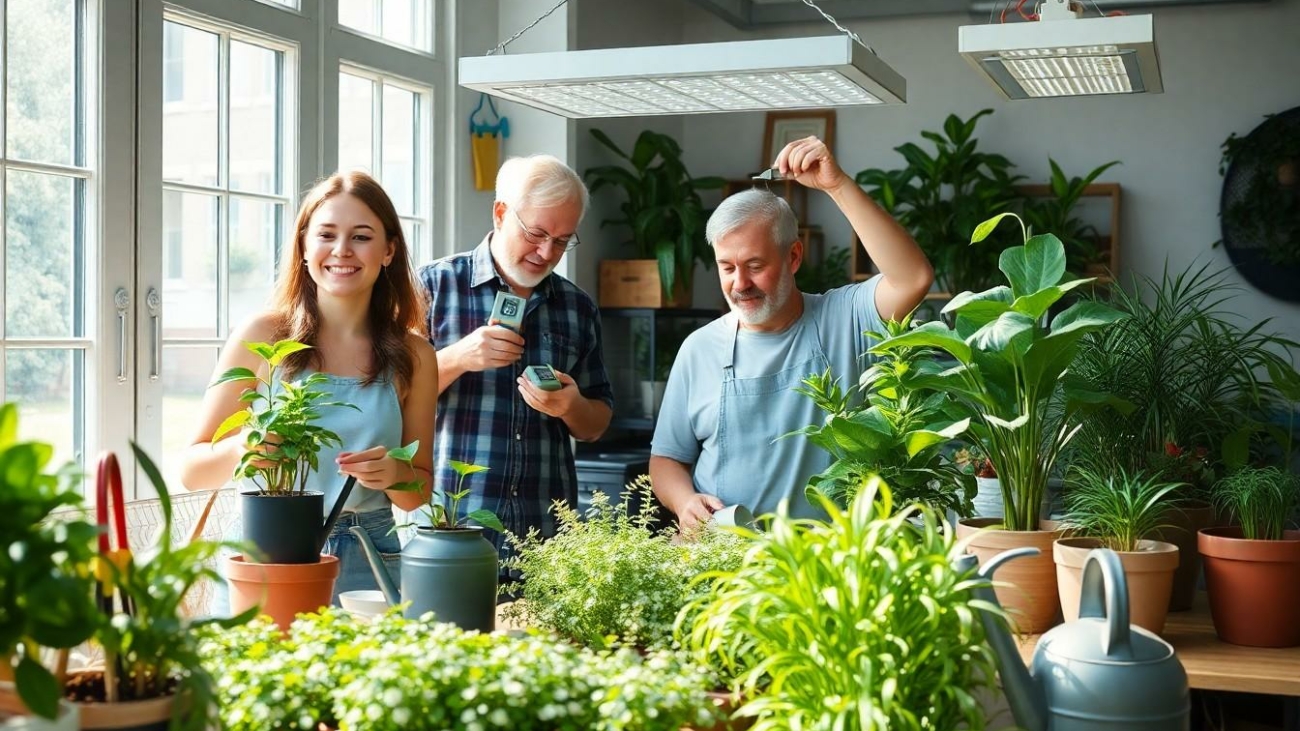Ready to turn those brown thumbs green? Indoor gardening has become the perfect hobby for plant enthusiasts who want to bring nature’s beauty inside their homes. Whether living in a tiny apartment or a spacious house everyone can create their own indoor oasis with the right supplies.
From essential tools like pruning shears and watering cans to high-tech grow lights and automated irrigation systems today’s indoor gardening supplies offer countless options for both beginners and seasoned plant parents. The right equipment makes the difference between watching plants thrive and wondering why they’re giving up on life. Plus with modern solutions for every growing challenge there’s never been a better time to start an indoor garden.
Indoor Gardening Supplies
Indoor gardening success depends on having the right supplies. These essential tools create a foundation for healthy plant growth while making maintenance tasks efficient.
Basic Tools and Equipment
A complete indoor gardening toolkit includes hand pruners, garden scissors, hand trowels, plant stakes, plant ties, spray bottles, watering cans, humidity meters, pH meters, plant markers, gloves, cleaning brushes, a moisture meter, a thermometer, and a humidity gauge. Clean, sharp pruners cut stems cleanly to promote healthy growth. Hand trowels with ergonomic handles transfer soil, mix amendments, and transplant seedlings. Spray bottles filled with filtered water mist delicate leaves and increase humidity around tropical plants. Digital meters monitor soil conditions to prevent over or underwatering.
Growing Containers and Pots
Indoor plants thrive in containers that match their growth habits and moisture needs. Terra cotta pots provide excellent drainage through porous clay walls. Plastic containers retain moisture longer, making them ideal for humidity-loving plants. Ceramic pots combine aesthetics with functionality through glazed finishes. Self-watering containers feature water reservoirs that maintain consistent soil moisture. Hanging baskets maximize vertical space for trailing plants. Each pot requires drainage holes, saucers to catch excess water, and appropriate sizing to allow 1-2 inches of root growth space. Container depth ranges from 6 inches for herbs to 12+ inches for large houseplants.
Soil and Growing Media Options

Indoor gardening success depends on selecting the right growing medium for each plant type. The foundation of healthy plant growth starts with understanding different soil and media options available for various indoor growing methods.
Potting Mix Types
Indoor potting mixes create optimal growing conditions through specific ingredient combinations. Commercial potting soils contain peat moss for water retention sphagnum perlite for aeration coconut coir for root development. Premium mixes incorporate vermiculite limestone worm castings organic fertilizers for enhanced nutrition. Specialty mixes cater to specific plant needs:
- Succulent mix: Fast-draining blend with extra perlite sand pumice
- African violet mix: Light airy composition with extra peat moss
- Orchid mix: Bark-based medium with charcoal sphagnum moss
- Citrus mix: Heavy-feeding formula with added nutrients minerals
Hydroponic Growing Mediums
Hydroponic systems use soilless media to support plant roots while delivering nutrients through water. Common hydroponic media include:
- Expanded clay pellets: Lightweight porous balls for root aeration drainage
- Rockwool cubes: Mineral fiber blocks that retain water oxygen
- Coco fiber: Sustainable medium from coconut husks
- Perlite vermiculite blend: Sterile inert mix for seed starting
- Net pots: Mesh containers filled with growing media
| Medium | Water Retention | Reusability | pH Neutral |
|---|---|---|---|
| Clay Pellets | Moderate | Yes | Yes |
| Rockwool | High | No | No |
| Coco Fiber | High | Limited | Yes |
| Perlite Blend | Low | Yes | Yes |
Lighting Systems For Indoor Plants
Indoor plants require adequate light for photosynthesis and healthy growth. Selecting the right lighting system depends on the plant species requirements and available space.
LED Grow Lights
LED grow lights transform indoor gardening by providing targeted light spectrums for optimal plant growth. These lights consume 75% less energy than traditional grow lights while producing minimal heat. Modern LED systems include adjustable spectrums that match specific growth stages: blue light (400-500nm) promotes vegetative growth while red light (600-700nm) enhances flowering and fruiting. Premium LED fixtures offer programmable timers automated dimming and height-adjustable mounting systems. Common configurations include panel lights for wide coverage hanging strips for vertical gardens spot lights for individual plants.
Natural Light Solutions
South-facing windows provide 6-8 hours of direct sunlight ideal for high-light plants like succulents herbs citrus. East-facing windows deliver 4-6 hours of gentle morning sun perfect for tropical foliage plants ferns orchids. Glass shelving maximizes light penetration to lower plants while multi-tiered plant stands optimize vertical space near windows. Light-reflecting surfaces such as white walls mirrors decorative metallic objects increase light distribution throughout growing areas. Window films regulate intense sunlight protecting sensitive plants from leaf burn during peak hours.
Plant Nutrition and Fertilizers
Indoor plants require specific nutrients to thrive in their contained environments. A balanced feeding approach combines the right fertilizer types with appropriate application schedules to promote optimal growth.
Organic vs Synthetic Options
Organic fertilizers derive from natural sources like compost tea bone meal worm castings fish emulsion. These materials release nutrients slowly providing steady nourishment for 3-4 months. Synthetic fertilizers contain concentrated nutrients in precise ratios (like 10-10-10 NPK) delivering immediate results. Chemical formulations offer specific advantages:
- Water-soluble powders dissolve completely for even distribution
- Liquid concentrates mix easily with irrigation water
- Slow-release pellets provide nutrients for up to 6 months
- Specialized blends target specific plant needs (orchids cacti foliage)
Feeding Schedules
Indoor plants exhibit distinct nutrient needs based on their growth cycles. Most houseplants benefit from fertilizer application every 2-4 weeks during active growth periods (spring summer). Application frequencies vary by plant type:
| Plant Type | Growing Season | Dormant Season |
|---|---|---|
| Flowering | Every 2 weeks | Monthly |
| Foliage | Monthly | Every 8 weeks |
| Succulents | Every 6 weeks | None |
Monitoring plant responses guides adjustments to feeding schedules. Signs of nutrient deficiency include yellowing leaves stunted growth poor flowering. Excess fertilization causes leaf burn root damage salt buildup.
Environmental Control Equipment
Environmental control equipment maintains optimal growing conditions for indoor plants by regulating temperature humidity air circulation. These systems work together to create a microclimate that mimics plants’ natural habitats.
Temperature Control
Indoor gardens thrive in temperatures between 65-80°F (18-27°C) during the day with a 10°F drop at night. Thermostats connected to heating mats provide consistent soil temperatures for seed germination seedling growth. Mini fans regulate air temperature by creating gentle circulation preventing hot spots. Temperature monitoring systems track fluctuations sending alerts when conditions fall outside preset ranges. Smart controllers adjust heating cooling elements automatically maintaining ideal growing environments across seasons.
Humidity Management
Indoor humidity levels affect plant health directly with most houseplants preferring 40-60% relative humidity. Humidifiers increase moisture levels while dehumidifiers remove excess water vapor preventing mold growth. Humidity trays filled with pebbles water create localized moisture zones beneath plant containers. Digital hygrometers measure ambient humidity levels enabling precise environmental adjustments. Automated humidity controllers maintain consistent moisture levels by activating equipment based on real-time readings. Multi-zone systems allow different humidity settings for various plant groups such as tropical plants desert succulents.
Pest Control and Plant Care Products
Indoor gardens face unique pest challenges that require specific control measures. Common pests include spider mites aphids whiteflies scale insects that thrive in controlled environments. Neem oil serves as an organic pesticide targeting multiple pest species while remaining safe for indoor use.
Integrated pest management combines these essential products:
- Sticky traps in yellow or blue colors to capture flying insects
- Insecticidal soaps that eliminate soft-bodied pests on contact
- Beneficial insects like ladybugs or predatory mites for natural control
- Diatomaceous earth to dehydrate crawling insects
Plant care products enhance overall health protection:
- Leaf shine sprays to remove dust maintain photosynthesis
- Pruning seals to protect damaged stems from infection
- Root stimulants to encourage strong growth development
- Fungicides to prevent common indoor plant diseases
| Product Type | Coverage Area | Reapplication Interval |
|---|---|---|
| Neem Oil | 100 sq ft | 7-14 days |
| Sticky Traps | 50 sq ft | 30 days |
| Insecticidal Soap | 75 sq ft | 7 days |
| Leaf Shine | 200 sq ft | 30 days |
Natural deterrents create protective barriers:
- Cinnamon powder sprinkled on soil prevents fungus gnats
- Rosemary oil sprays repel common flying insects
- Nematodes in soil target root-eating larvae
- Copper tape around pots blocks slugs snails
Regular monitoring using magnifying glasses plant inspection tools enables early detection prevention of pest issues. Documentation of treatment dates results helps establish effective care routines for indoor gardens.
Organization and Storage Solutions
Proper storage solutions maximize space efficiency in indoor gardens while protecting valuable gardening supplies. Vertical storage systems create additional room by utilizing wall space with mounted shelves stackable containers. A dedicated potting station keeps soil watering supplies contained during plant maintenance tasks.
Tool Storage Options
- Wall-mounted pegboards display frequently used tools like pruners trowels spray bottles
- Rolling tool carts provide mobile access to supplies across multiple growing areas
- Clear storage bins with labels organize small items such as plant stakes markers ties
- Magnetic strips hold metal tools securely while saving drawer space
Supply Organization Systems
- Airtight containers preserve soil amendments fertilizers pest control products
- Drawer organizers separate seed packets plant labels measuring tools
- Under-shelf baskets maximize vertical storage in cabinets
- Heavy-duty shelving units support multiple containers of growing media
| Storage Solution | Capacity | Best For |
|---|---|---|
| Pegboard System | 15-20 tools | Hand tools accessories |
| Rolling Cart | 3-4 cubic feet | Frequently used items |
| Storage Bins | 6-20 quarts | Soil amendments |
| Shelf Units | 200-400 lbs | Large containers |
Workspace Organization
- Dedicated potting bench with built-in storage compartments
- Fold-down wall-mounted workstation for small spaces
- Supply caddy with compartments for daily maintenance items
- Plant maintenance zone with drainage mat collection tray
These storage solutions create an organized efficient indoor gardening workspace where supplies remain accessible protected from moisture damage. Each organizational system adapts to available space while keeping essential tools within reach during plant care routines.
Journey to a Thriving Indoor Garden
Starting an indoor garden becomes significantly easier with the right supplies and knowledge. Today’s market offers innovative solutions for every indoor gardening challenge from basic tools to advanced automated systems. Whether someone’s a beginner or an experienced plant enthusiast they’ll find success by investing in quality supplies that match their gardening goals.
The journey to a thriving indoor garden starts with essential tools continues with proper growing media and lighting and flourishes with appropriate care and maintenance. Armed with these supplies any space can transform into a flourishing indoor garden that brings joy satisfaction and natural beauty to the home.
